Things to see in Piazza del Duomo in Lecce
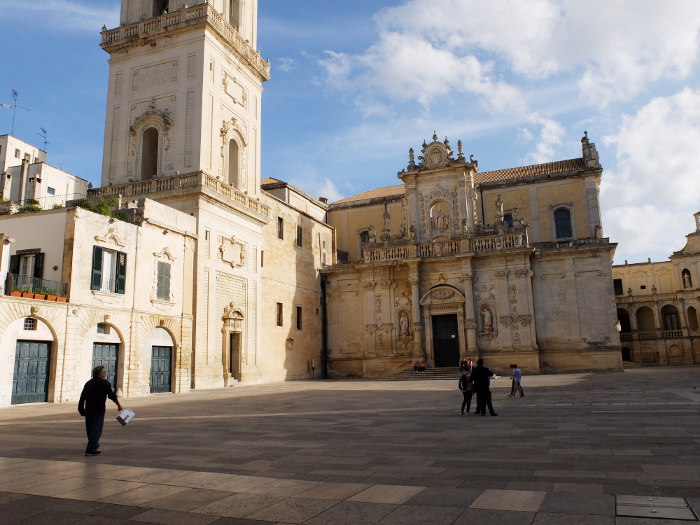
Over the next few months I plan to tell you all about my city, Lecce. The must-see city when you come to the Salento region on holiday. The compact historic centre of Lecce is a narrow maze of alleyways, full of stunning Baroque architecture, but it has so much more to offer. Whilst walking around the old town you will discover one of the most beautiful squares in the whole of Italy: Piazza del Duomo.
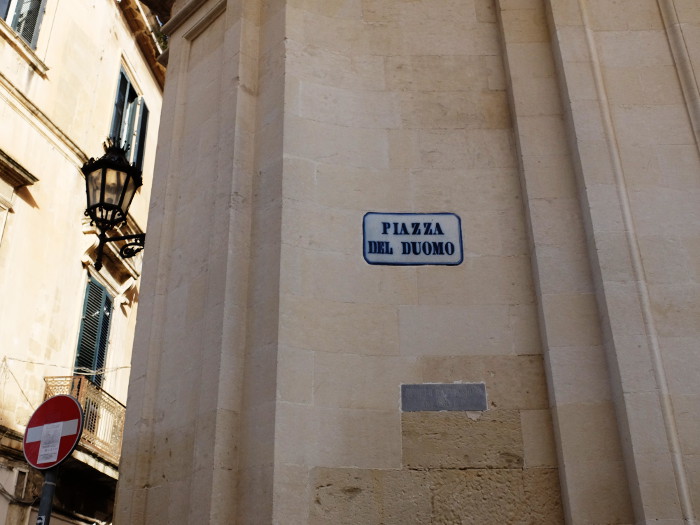
The square is completely enclosed on three sides, and the only entrance is at the junction of Via Giuseppe Libertini and Via Vittorio Emanuele II. In the past, the square was a courtyard during the day but was closed by gates in the evening. At the entrance to the square you can still see the large stumps of the gates. Within this Baroque square are: the Duomo of Lecce, the Bell tower, the Bishop’s Palace and the Seminary Palace.
The Cathedral of Our Lady of Assumption (Duomo di Maria Santissima Assunta)
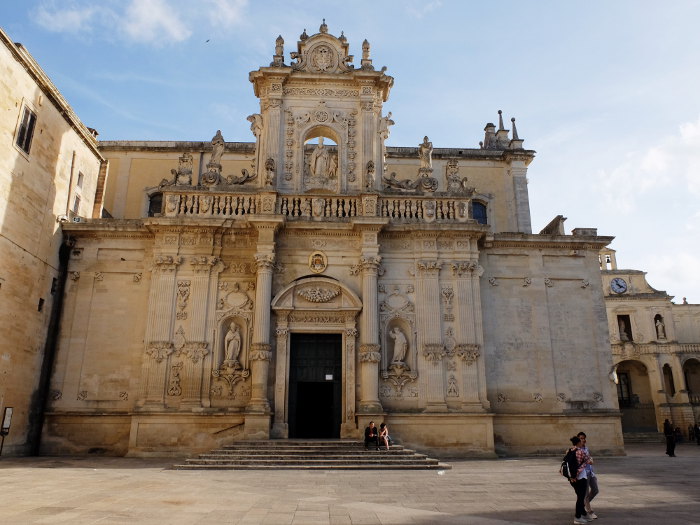
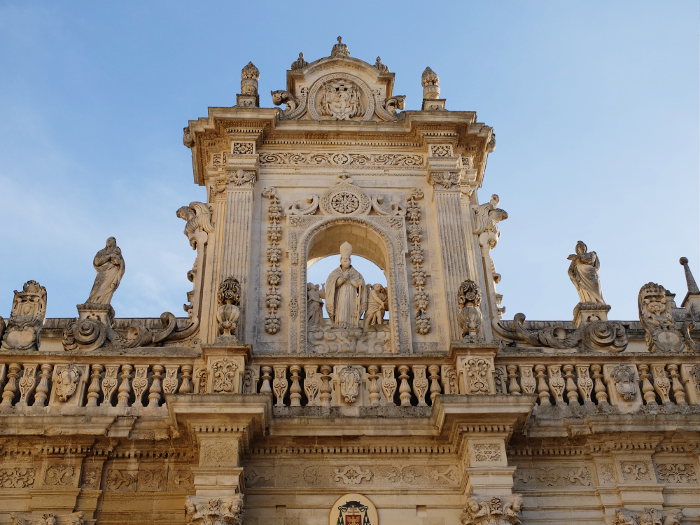
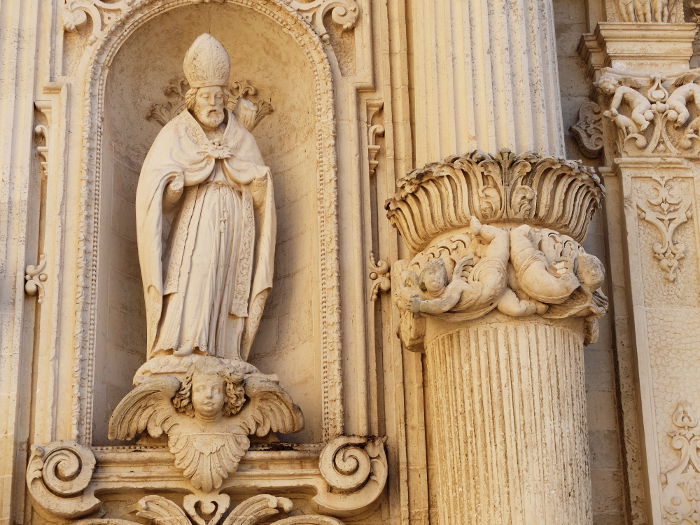
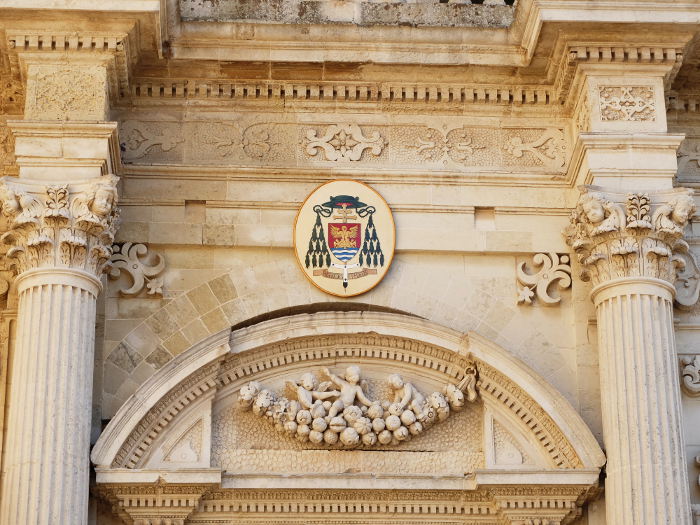
In the centre of the square is the Duomo of Lecce, which is the city’s cathedral. The building was originally built in 1144 by Bishop Formoso and was restored in the Baroque style in 1659 by the architect Giuseppe Zimbalo. The architect Zimbalo is regarded as the most prominent exponent of Lecce Baroque. You can see many of his famous designs throughout the old centre of Lecce, such as: the Church of the Rosary, the lower facade of the Celestine Palace, the column of Saint Oronzo … The most unusual thing about the square is the so called ‘false facade’ of the Duomo, I will explain this. When you enter the square, you will see the stunning Baroque facade of the Duomo. In actual fact, this is not the main facade of the church which you will soon realise when you go in; this entrance leads you directly into a side aisle of the church! The principal facade is at the side and is not visible when you enter the square, see the photo below.
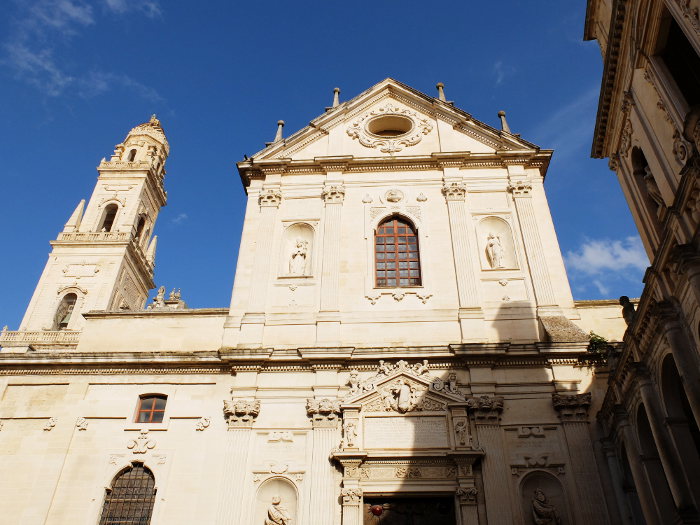
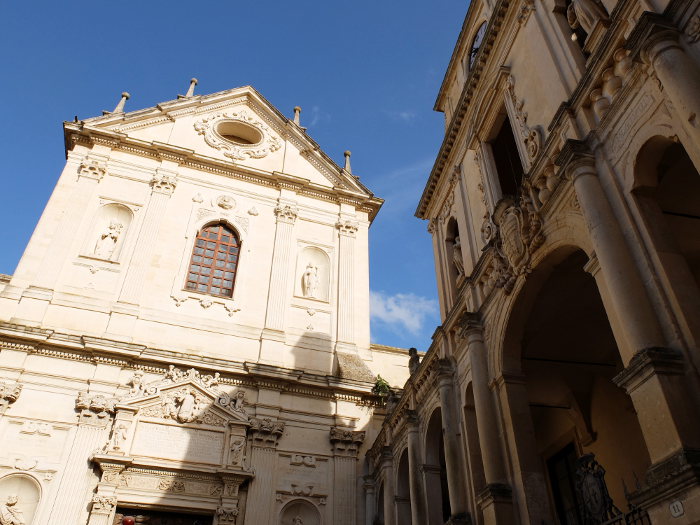
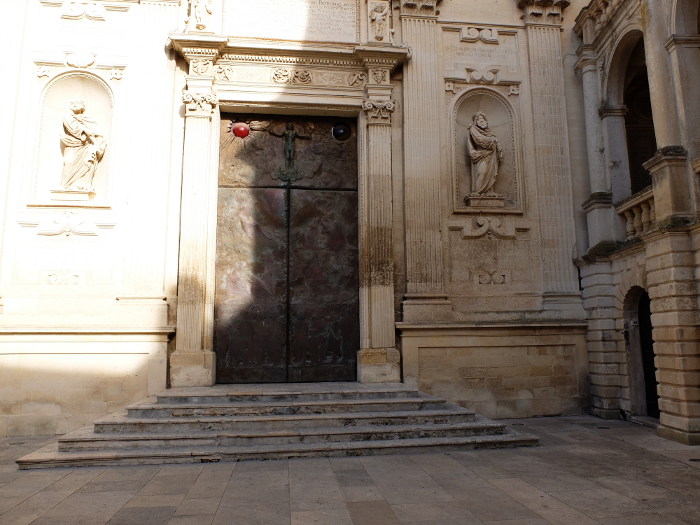
Can you see what I mean? It is most definitely less ornate and more sober than the one we see when we enter the square. The builders concentrated on developing a more elaborate and ornate facade, which is a triumph of the Lecce Baroque style. This scenographic design was used so that the visitor would not see just a plain, flat wall when they enter the square. To enter the Duomo, use the door on the false facade and remember that you are entering a sacred place, therefore: do not shout or make any noise, taking photographs is not allowed. For a closer look at the interior of this stunning church, check it out here on Wikipedia. The interior is based on the design of a Latin cross, with three aisles. It has 12 altars, in addition to the high altar, and it is decorated with the magnificent art work of local artists of that time.
The Bell Tower (Campanile)
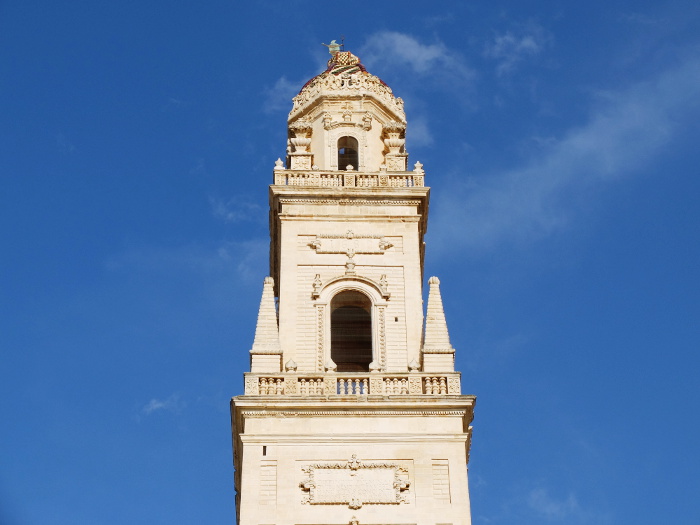
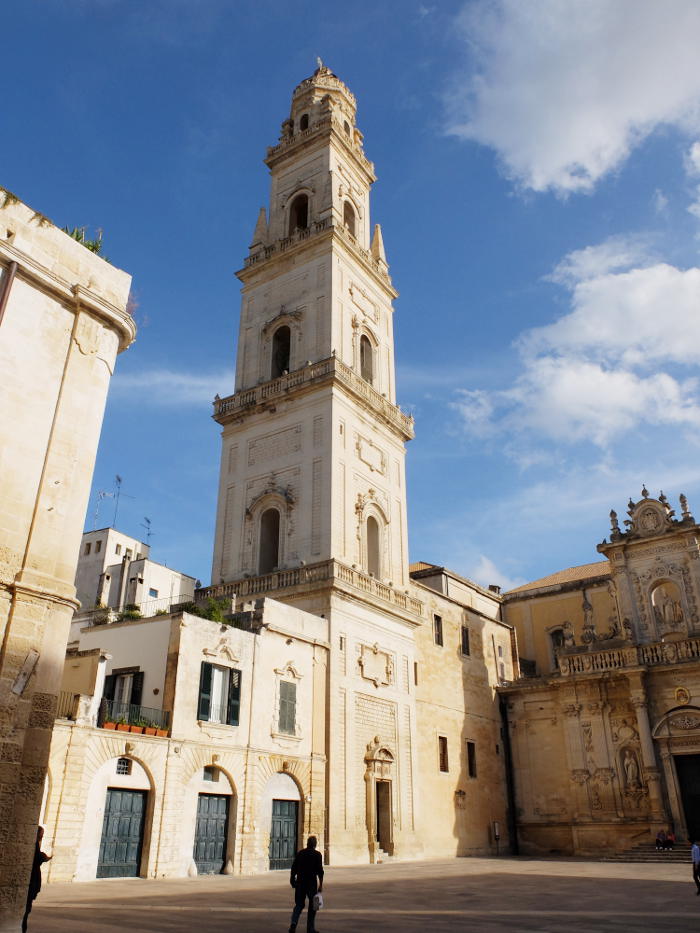
It is on the left hand side of Duomo. It was commissioned by the Bishop of Lecce, Luigi Pappacoda, and was built between 1661 and 1682. It was built to replace the Norman cathedral, which collapsed at the beginning of the seventeenth century. It is 72 metres high.
The Bishop’s Palace (Episcopio)
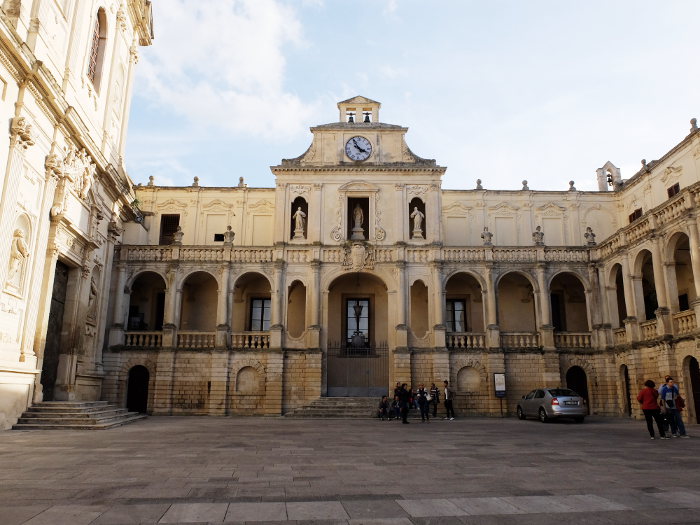
The Bishop’s Palace is to the right hand side of the Duomo and is the residence of the Archbishop of Lecce.
The Seminary Palace (Palazzo del Seminario)
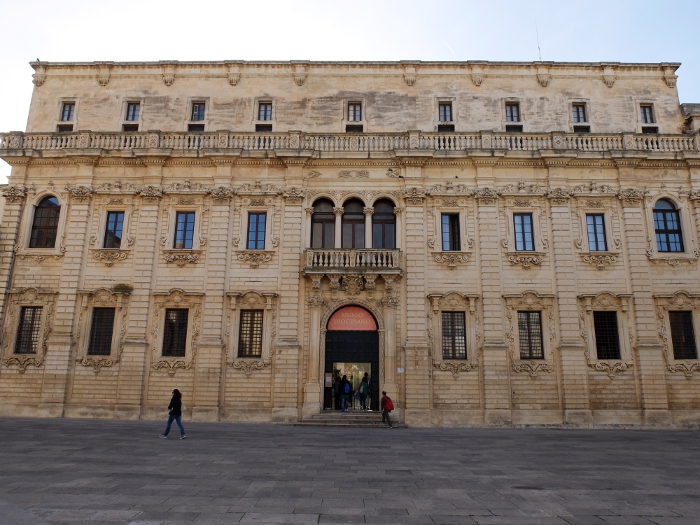
The Seminary Palace is another historic building in the Lecce Baroque style built between 1694 and 1709. It is to the right hand side of the Bishop’s Palace. Inside it is the Diocesan Museum of Sacred Art, opened in 2004 during Triennial of Contemporary Religious Art. The main works of sacred art from urban religious buildings are conserved there. There is also a very beautiful cloister inside the palace, an absolute must see.
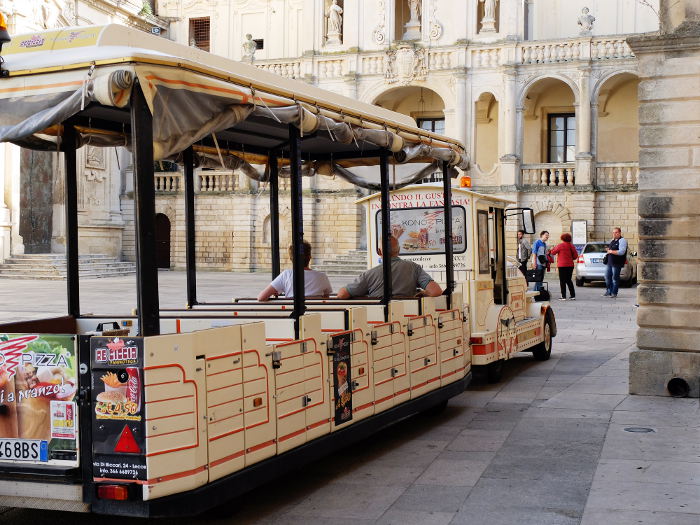
The Seminary Palace opening times:
– The Cloister
Winter opening times: 9.30am – 12 noon, 4pm – 7pm
Summer opening times: 9.30am – 12 noon, 5pm – 8pm
– The Museum
Winter opening times: Tuesday to Saturday: 9.30am – 12.30pm, 4pm – 7pm. Open on Sunday by prior arrangement only.
Summer opening times: Tuesday to Saturday: 9.30am – 12.30pm, 5pm – 8pm. Open on Sundays by prior arrangement only.
– Admission fee with reductions for organized groups, pensioners, children:
€1 the visit is limited to the ground floor: the cloister, chapel, the contemporary Sacred Art Gallery
€4 the visit also includes the Diocesan Museum, with displays of vestments, silverware, paintings.




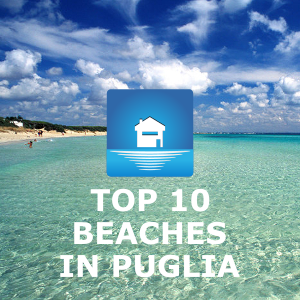
Last comments